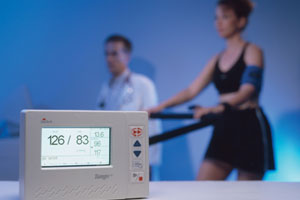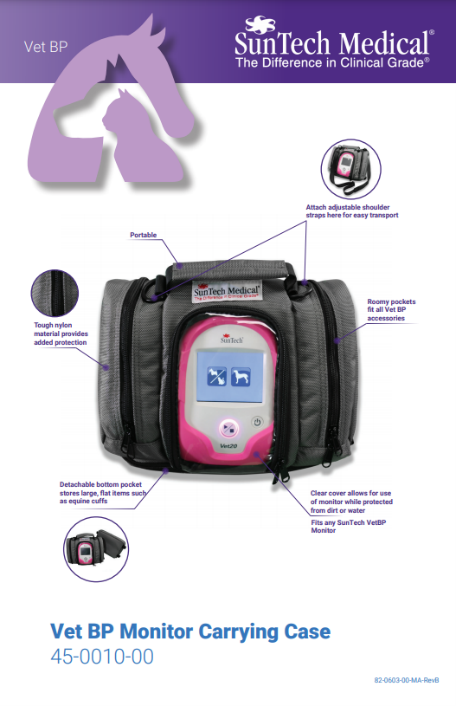![]()
Blog @ SunTech
Advice from the BP Measurement Experts
Advantages of Automated Blood Pressure Measurement during Cardiac Stress Testing
 Cardiac stress testing is commonly used to gauge how well the heart works and to identify if a patient is at risk for cardiovascular disease (CVD). During a cardiac stress test a patient walks on a treadmill or rides a stationary bike. As exercise intensity increases, the heart has to pump harder and use more oxygen. This mimics the strain placed on the heart when arteries are blocked or narrowed. Several parameters are monitored during the stress test including ECG waveforms, blood pressure, and oxygen saturation.
Cardiac stress testing is commonly used to gauge how well the heart works and to identify if a patient is at risk for cardiovascular disease (CVD). During a cardiac stress test a patient walks on a treadmill or rides a stationary bike. As exercise intensity increases, the heart has to pump harder and use more oxygen. This mimics the strain placed on the heart when arteries are blocked or narrowed. Several parameters are monitored during the stress test including ECG waveforms, blood pressure, and oxygen saturation.
The most widely-used cardiac stress testing methodology is the Bruce protocol. The protocol consists of a series of seven, 3-minute stages where the speed and incline of the treadmill increase in each segment. Patients are stopped when they reach their expected maximum heart rate with most patients not progressing past stage 3 or 4. During cardiac stress testing a blood pressure measurement is typically initiated at two minutes in to each stage. With the major role that blood pressure measurement plays in cardiac stress testing, accurate BP readings are critical to accurate diagnosis.
While manual blood pressure measurement is still widely accepted for stress testing, there are several disadvantages to using the manual technique.
- Environmental Noise: There is a lot of noise during a treadmill stress test, and it can be difficult to determine the difference between a Korotkoff sound (which is how manual BP readings are measured) and a foot strike on the treadmill.
- Poor technique: Unfortunately, many health care professionals do not receive refresher courses on BP measurement. The most common sources of error during manual BP measurement include improper cuff sizing and rapid deflate rate. Improper cuff sizing can significantly impact the accuracy of the BP measurement with the most common error being the use of a cuff that is too small. This can artificially increase BP by more than 10mmHg. Additionally, the AHA recommends a deflate rate of 3mmHg or less, however many health care professionals and stress technicians deflate at rates of greater than 10mmHg/sec. The result is an inaccurate BP reading where systolic BP is too low and diastolic BP is too high.
- Inter-observer and intra-observer variability: I've already pointed out intra-observer variability causess poor measurement technique. In addition, stress techs have observer bias whereby he or she thinks a patient's BP should be within a certain range based on the patient's fitness and health and generally the reported BP measurement falls within that range. To add to this, most stress labs have several stress techs which adds another degree of variability with the differences in manual BP measurement techniques between stress techs.
- Patient Focus: When stress techs are engaged in active manual blood pressure measurement they are not able to focus on the patient's overall well-being. In the event that a patient crashes during the test, critical blood pressure measurements can not be taken when a stress tech must shift his attention to patient care.
One solution to the disadvantages of manual BP measurement during testing is the use of an automated BP monitor specifically designed for cardiac stress testing. These BP monitors are designed with settings for both duration and frequency to improve the accuracy of BP measurements. Using an automated BP monitor also eliminates inter-observer variability. Finally, when the stress tech needs to focus on a patient in a crisis situation, the automated BP monitor is able to acquire BP readings which aids in assessing a patient's overall condition. Every stress lab needs this capability in my opinion!
Do you have a story of how this technology has helped your stress lab in a crisis situation or how it would have helped? We would love to hear about it!
Interested in getting more SunTech news, product info, as well as
tips, tricks, and insights from BP experts?
Sign up to get fresh content delivered direct to your inbox.



